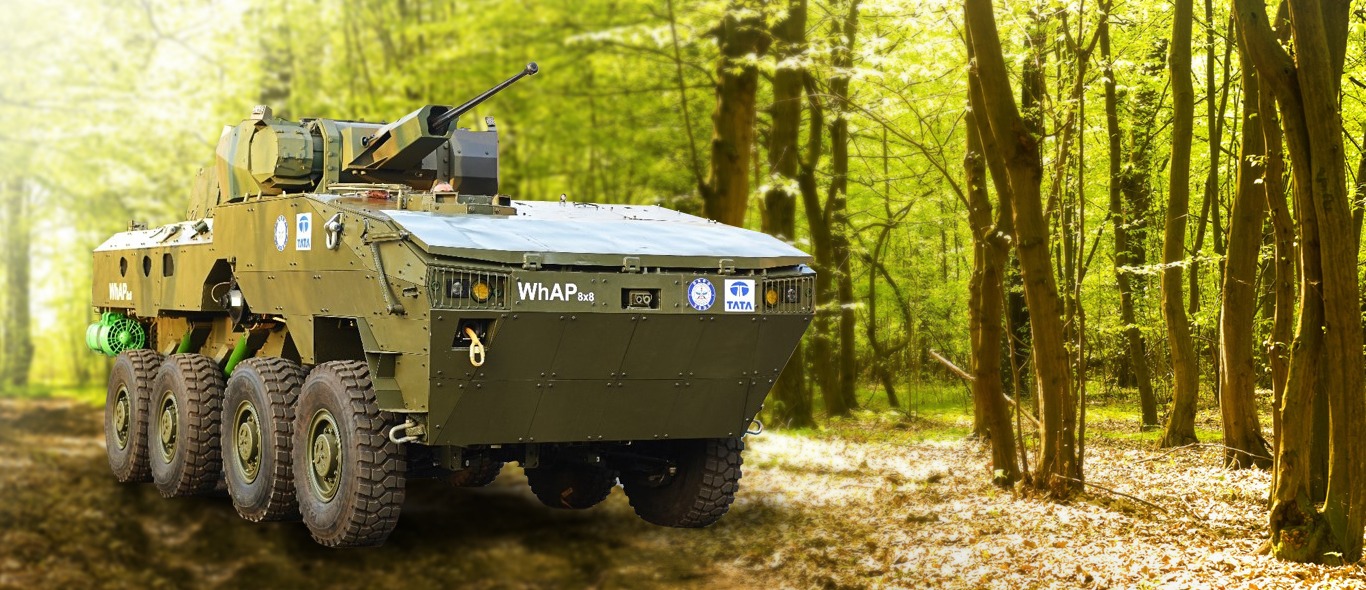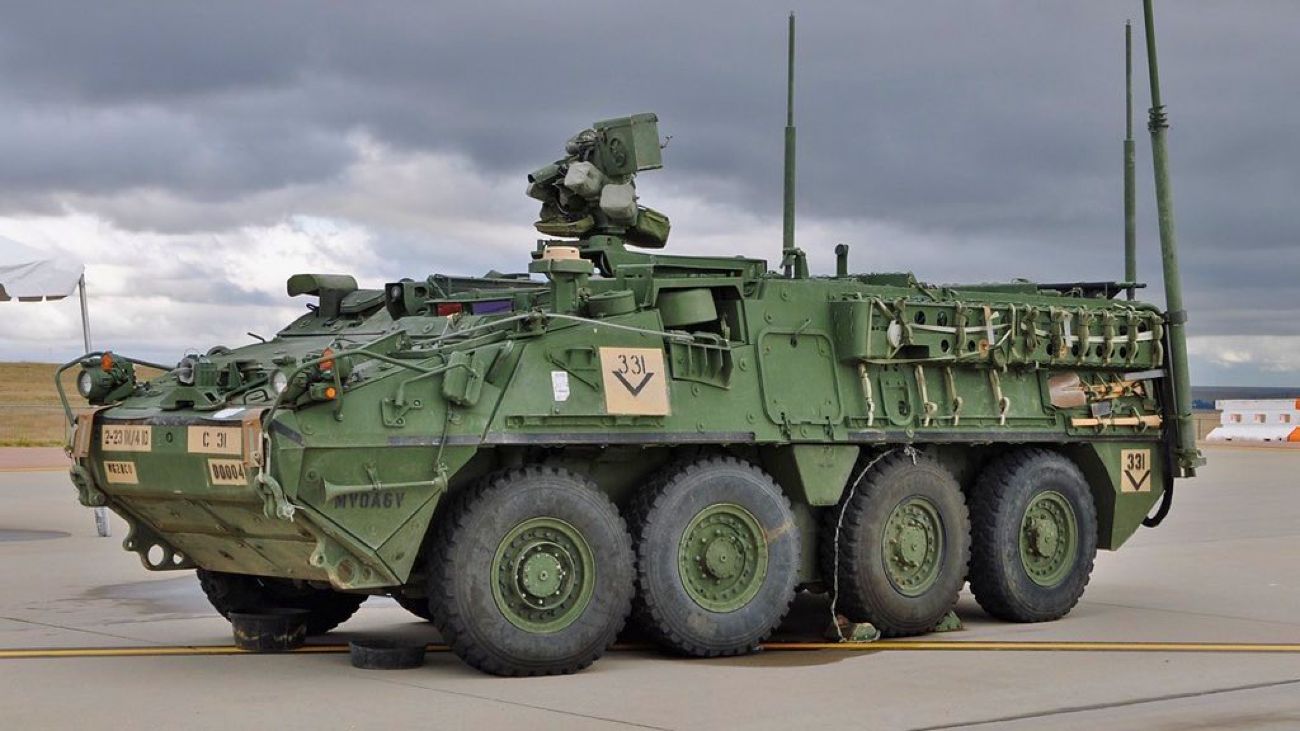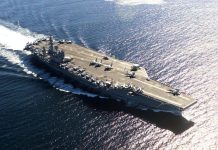Tata has reportedly secured a contract to manufacture 150 Wheeled Armoured Platform (WhAP) combat vehicles for the Moroccan defense forces.
The pride and elation over the export contract may best be termed as muted.
One reason is that the Indian MoD (Ministry of Defence) appears more enthused about the prospect of inducting the Stryker ICV (infantry combat vehicle) developed by General Dynamics Land Systems (GDLS) into the Indian Army than the Tata Motors-developed WhAP.
WhAP Development History
The WhAP was initially developed as the TATA Kestrel, which was initially classified as an IPMV (Infantry Protected Mobility Vehicle).
Tata Motors developed the Kestrel in response to a request for information (RFI) for the supply of chassis, propulsion unit, and weapon system for a wheeled armored amphibious platform under the FICV (wheeled) program.
The Kestrel was conceptualized to replace older Soviet-era BMP-1 and BMP-2 armored personnel carriers used by the Indian Army.
The Kestrel was developed in close collaboration with the DRDO and the Indian Army. Tata Motors first showcased it at the Defexpo 2014, featuring the Kongsberg PROTECTOR MCT-30R turret.
The platform underwent extensive trials in various terrains, including deserts, high altitudes, and plains, to ensure that it met the Indian Army’s stringent requirements. During these trials, the vehicle’s mobility, durability, and protective features were thoroughly tested. The vehicle’s ability to withstand blasts and firepower was also a major focus.
LCA Tejas: US Shoots India In The Foot By Sanctioning Russia Resulting In Mk-1A Engine Delay: OPED
The trials significantly pivoted on the vehicle’s modularity and adaptability to different weapon systems. Versions of the WhAP were equipped with 30mm cannons, missile launchers, and other armament systems.
Tata Motors unveiled a new variant of the Kestrel, WhAP, at the 2017 Aero India defense exhibition.
After the trials were completed, Tata Motors announced that the WhAP was ready for mass production. This vehicle was India’s first indigenously developed 8×8 wheeled armored vehicle, and it represented a major step forward in the country’s defense manufacturing capabilities.
It was envisioned that the WhAP could be exported to friendly nations as well, adding a strategic export dimension to the project. In October 2019, the Indian Ministry of Defence cleared the Kestrel for production and export to friendly nations. The Indian Army planned to acquire 200 WhAPs.

WhAP Orders – Grudgingly Placed?
The first batch of WhAPs was inducted into the army on April 12, 2022, at Bombay Engineer Group (BEG) and Centre, Pune, by the then Chief of the Army Staff, General Manoj Mukund Naravane.
WhAP was inducted into the Central Reserve Police Force’s 110 Battalion at Pulwama, Kashmir, in August 2023. As of August 2024, the Army is reportedly planning to order another batch of 105 WhAPs from Tata Advanced Systems Limited.
In November 2023, the ToI reported that the US had offered to jointly manufacture the eight-wheeled Stryker infantry combat vehicle in India in response to the threat faced by India from China.
The article quoted Defence Secretary Giridhar Aramane as saying, “Our industrial and military teams will work with their US counterparts and come up with a concrete plan in this regard.”
At Par With HIMARS! Why Indian Pinaka MBRLS For Armenia Is Giving Sleepless Nights To Azerbaijan
In July, the Swarajya news portal reported that the army was initially looking to procure around 530 Strykers, apparently to address the requirement of 10 wheeled battalions of the standard mechanized infantry battalions.
After an initial off-the-shelf purchase of a limited number of Stryker ICVs through the US government’s foreign military sale program, the remaining units would be manufactured in India.
The speed with which the US proposal for joint manufacture of the Stryker AFV is being processed contrasts starkly with the desultory manner in which orders are being placed for the Tata WhAP.
At Par With HIMARS! IAF Veteran Decodes Why Armenia Opted For Pinaka MBRLS To Fight Azerbaijan
Some argue that the combat role fulfilled by the Stryker differs from the combat role fulfilled by the WhAP.
They claim that the Stryker is an Infantry Combat Vehicle (ICV), while the WhAP is an armored personnel carrier (APC). The fact is that WhAP is a multi-utility armoured platform with a modular design, configurable for a variety of combat and combat-support roles, including the role of an ICV.
ICVs, also known as Infantry Fighting Vehicles (IFVs), are armored vehicles designed to transport and support infantry in combat operations. They are distinct from Armored Personnel Carriers (APCs) in that they are more heavily armed and can engage in direct combat alongside infantry.
The distinction between an APC and an ICV is somewhat nebulous. Both APCs and ICVs support troop mobility. With augmented armor and firepower, an APC can play the role of an ICV. Modularity can dramatically alter the ability of an armored vehicle to support infantry in combat operations.

The WhAP qualifies as an ICV, as does the BMP-2, which the WhAP proposes to replace. The Stryker too is an ICV. Both the WhAP and Stryker are wheeled.
The WhAP can be configured as a very effective ICV armed with ATGM and/or guns.
US Stryker AFV vs India’s WhAP
The Tata WhAP and the Stryker are both 8×8 ICVs with a top speed of around 100 kph and a range of up to 600 km.
Here’s a quick comparison of the most important features of the two platforms.
Modularity
The WhAP is highly modular. It can be configured as an amphibious fighting vehicle capable of crossing rivers and lakes or operating in coastal areas. The capability is important, considering India’s geographical diversity.
WhAP modularity additionally facilitates upgrades to higher levels of protection based on mission needs. It offers protection against small arms fire and mine resistance, potentially up to STANAG Level 3 or higher.
The WhAP can be fitted with a 30mm automatic cannon, anti-tank guided missiles (ATGMs), and machine guns (7.62mm or 12.7mm), making it versatile in terms of firepower.
The Stryker platform is less modular. The basic platform is typically armed with a 12.7mm M2 Browning heavy machine gun or a 40mm automatic grenade launcher in a Remote Weapon Station (RWS).
The Stryker takes a nonmodular approach to enhanced firepower. It is available in a wide range of variants tailored to specific roles.
- Infantry Carrier Vehicle (ICV)
- Mobile Gun System (MGS) with a 105mm tank gun
- Anti-Tank Guided Missile (ATGM) variant with TOW missiles
- Stryker Dragoon with a 30mm autocannon
The Stryker arguably features better default protection. It comes with steel armor that provides protection against 14.5mm armor-piercing rounds, and it can be equipped with slat armor or composite armor for increased survivability, particularly against RPGs and IEDs.
Power Packs
The WhAP has a 600-hp (Cummins ISXe 600) power pack, while the Stryker has a 350-hp (Caterpillar C7).
The Tata WhAP is designed for versatility across diverse terrains, with features like amphibious capability, a powerful engine, and an adjustable suspension system.
The Stryker, on the other hand, is optimized for urban combat and lacks the WhAP’s amphibious and extreme off-road capabilities.
In Brief
The WhAP has an amphibious variant, while the Stryker does not.
The Stryker has more specialized variants, particularly with heavy weapon systems like the Mobile Gun System (105mm) and ATGM versions.
This level of specialization makes the Stryker a highly versatile combat vehicle.
The WhAP, however, is modular but does not yet have such diverse combat-tested variants.
The WhAP is more cost-effective than Stryker and is relatively less susceptible to US sanctions.
Strictly speaking, the WhAP conforms to user QRs, but the Stryker doesn’t.
Conclusion
The above comparison between the WhAP and Stryker platforms makes one wonder why a platform that was developed indigenously in the private sector with inputs from the DRDO and the Indian Army, a platform that competes well with the best in the world, is not drawing attention and orders from the Indian MoD.
Hopefully, the Moroccan export order, at the very least, will prompt introspection in MoD.
- Vijainder K Thakur is a retired IAF Jaguar pilot, author, software architect, entrepreneur, and military analyst.
- VIEWS PERSONAL OF THE AUTHOR
- Follow the author @vkthakur




